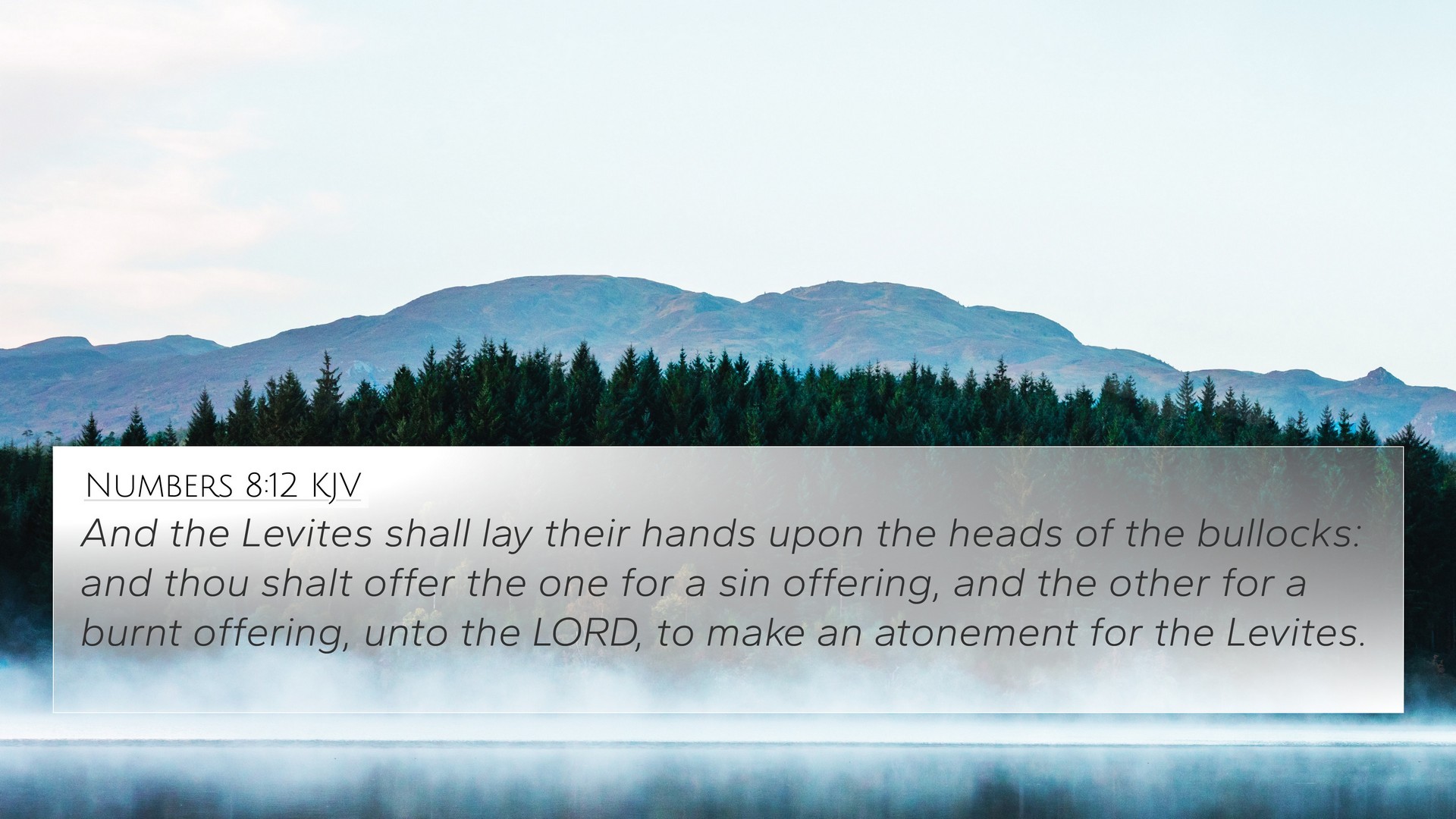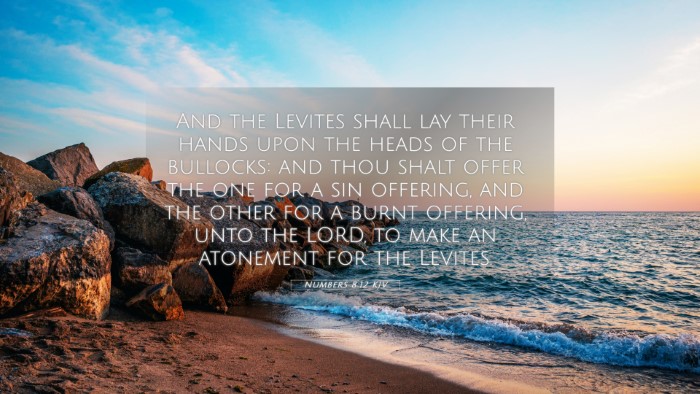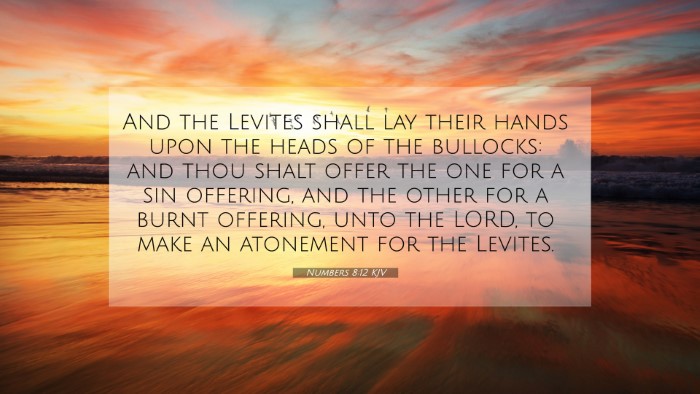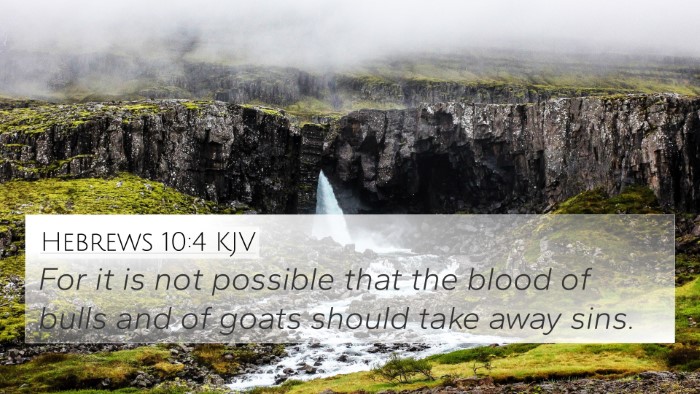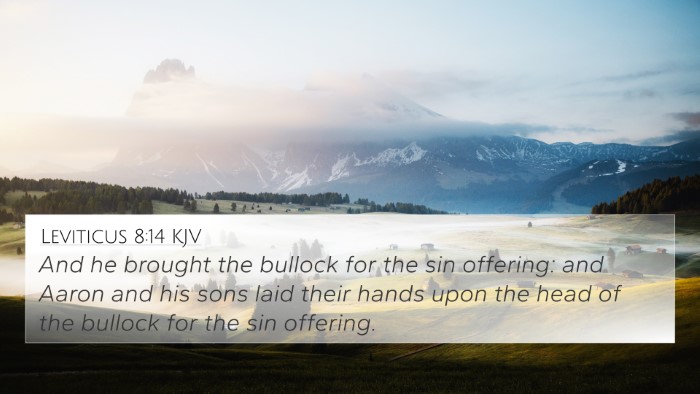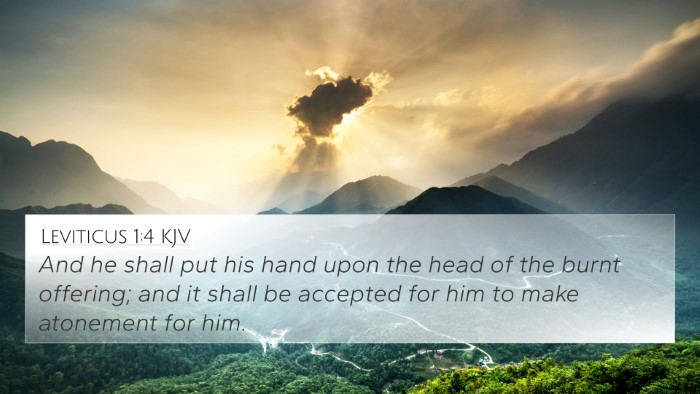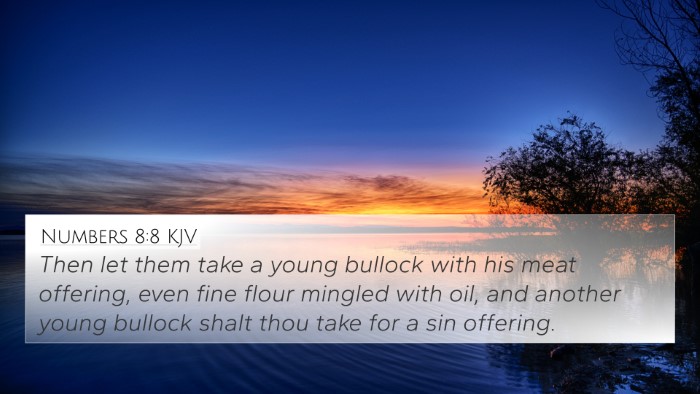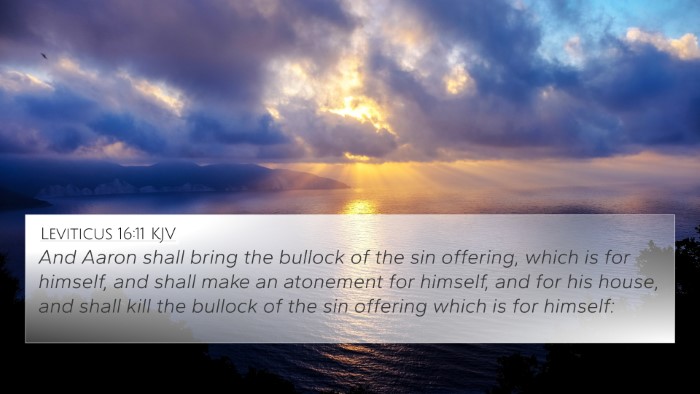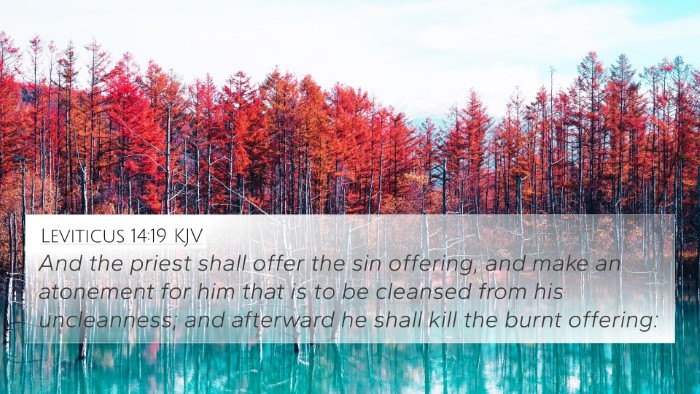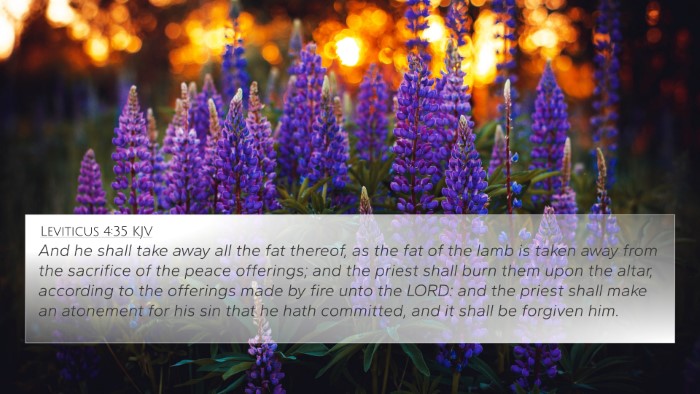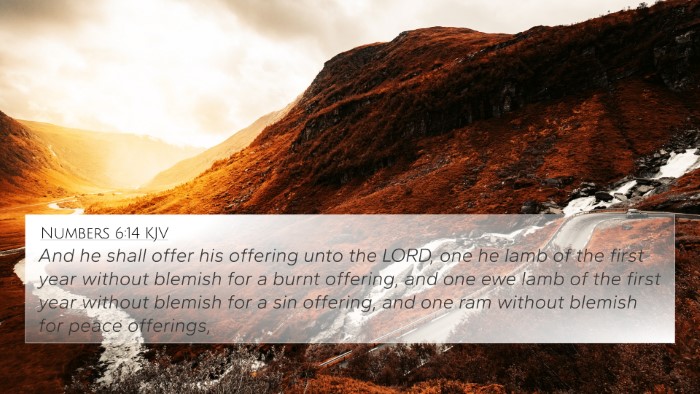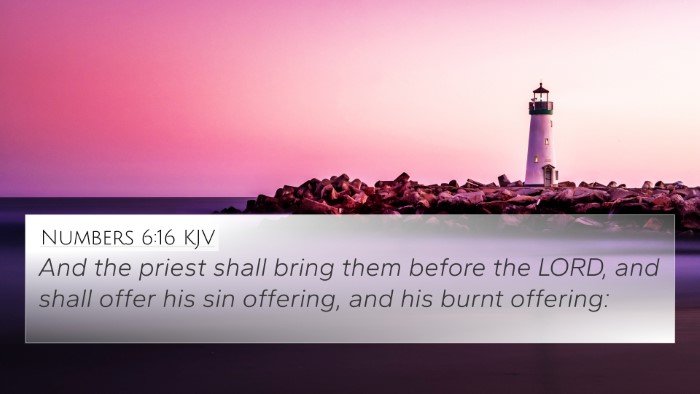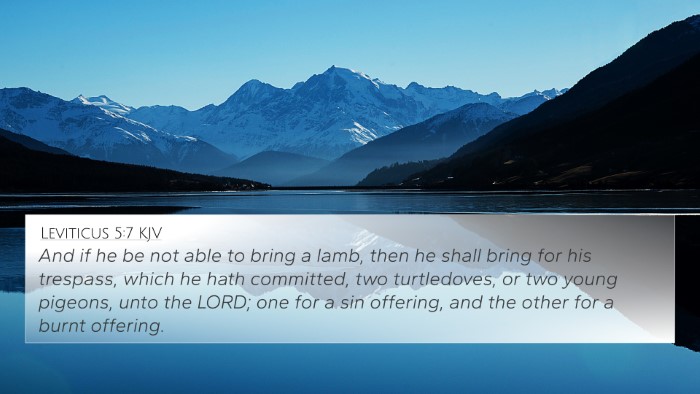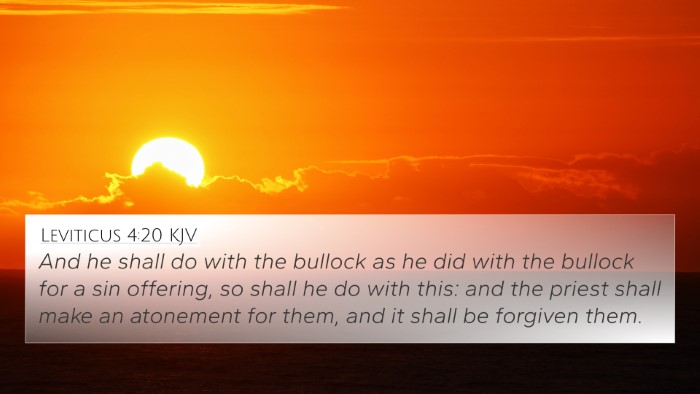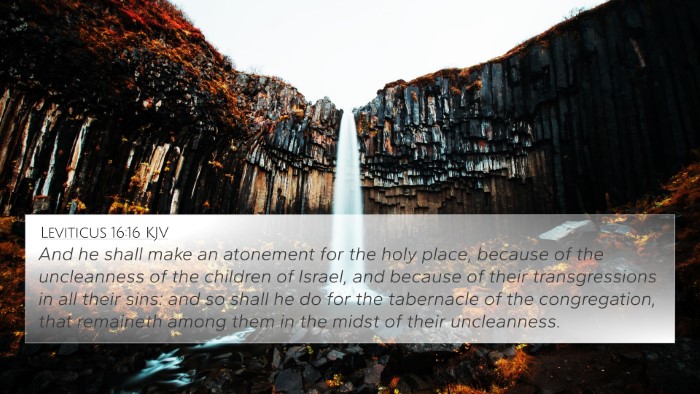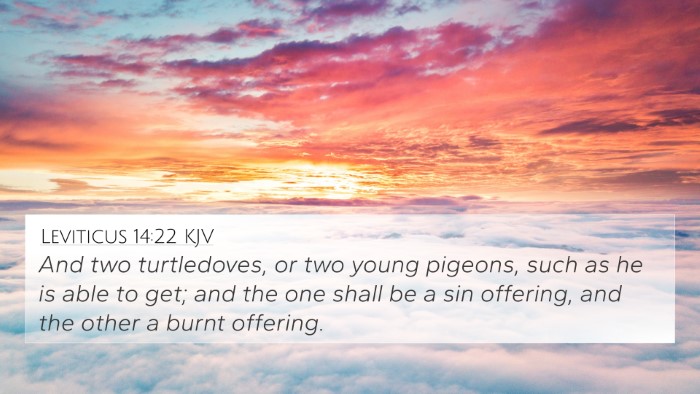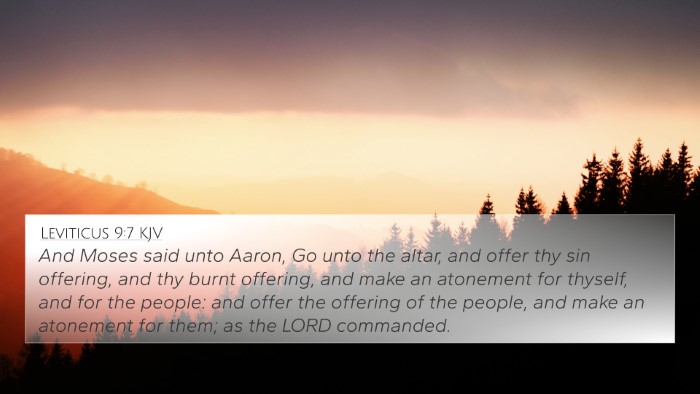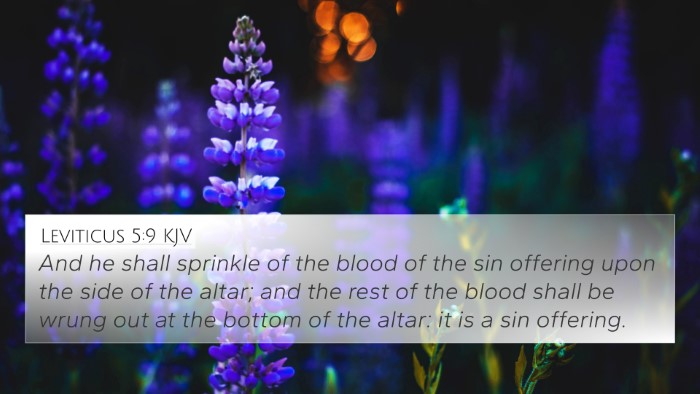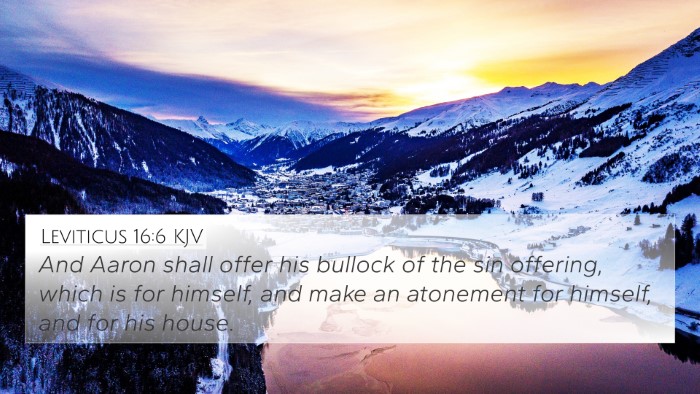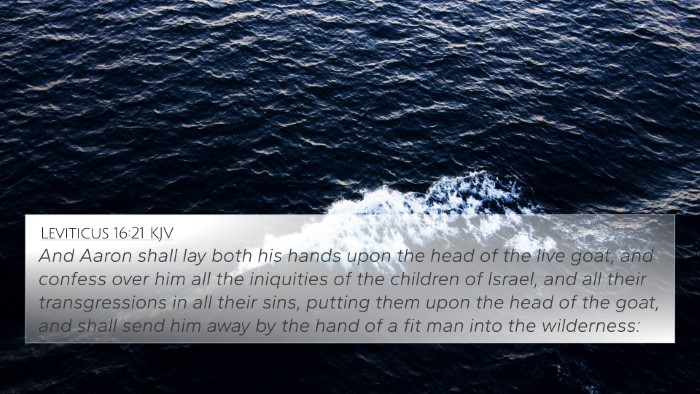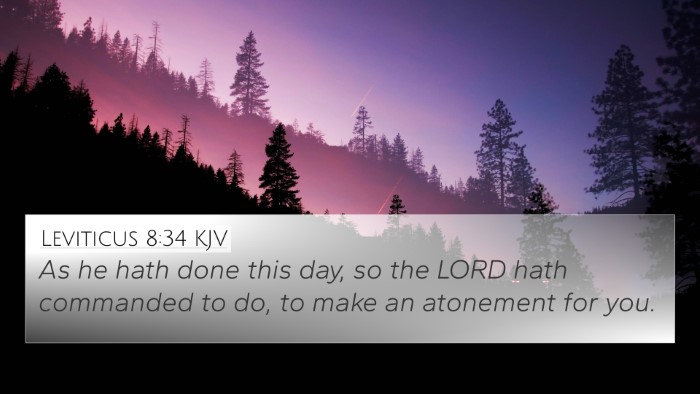Understanding Numbers 8:12: Insights from Public Domain Commentaries
Numbers 8:12 states, "And the Levites shall lay their hands upon the heads of the bullocks: and thou shalt offer the one for a sin offering, and the other for a burnt offering, unto the Lord, to make an atonement for the Levites."
Meaning and Interpretation
This verse outlines a significant ritual in the consecration of the Levites, who were designated for service in the sanctuary. The act of laying hands upon the bulls signifies the transfer of the people's sins to the animals, symbolizing atonement. The two types of offerings — sin and burnt offerings — play a crucial role in this ceremonial process.
1. The Role of the Levites
The Levites were set apart from the rest of Israel to perform sacred duties. Matthew Henry remarks that their consecration required them to be cleansed and made ceremonially fit to serve. It's an act not only for their purification but also to symbolize their unique role in mediating between God and the people.
2. Atonement and Sacrifice
Albert Barnes emphasizes the meaning of atonement in this context. The sin offering represents the acknowledgment of sin, while the burnt offering symbolizes total devotion to God. This duality reveals the profound understanding of sin and repentance present in the early Israelite community.
3. The Significance of Hand Laying
Adam Clarke elaborates on the laying of hands, which signifies identification. By laying hands on the bulls, the Levites recognized their need for sacrifice and connection to God. This act of faith links to other Biblical texts that endorse the significance of sacrificial offerings.
Cross-References and Thematic Connections
- Leviticus 1:4: Discusses the laying of hands on sacrificial animals.
- Exodus 29:10-14: Provides insight on consecration rituals, similar to the one in Numbers 8:12.
- Hebrews 9:22: Emphasizes the necessity of blood for atonement, mirroring the sacrificial theme here.
- Romans 12:1: Relates the concept of total sacrifice as the Levite offerings symbolize total dedication to God.
- 1 Peter 2:5: Connects the idea of believers being a holy priesthood, much like the Levites in service to God.
- Acts 15:28-29: Highlights the continuing necessity of sacrifice and holiness in the Christian community.
- Psalm 51:17: Speaks about the heart of sacrifice, echoing the intent of the burnt offering in this verse.
Thematic Bible Connections
This verse builds a bridge between the Old Testament principles of sacrifice and the New Testament fulfillment in Christ. As believers today, we can understand the Levites' consecration as a foreshadowing of Christ's ultimate sacrifice.
1. Cross-Referencing Biblical Texts
Cross-references, such as those mentioned, facilitate a deeper understanding of how sacrificial practices evolve from the Old Testament to their fulfillment in Christ, providing insight for sermon preparation and personal study.
2. Tools for Bible Cross-Referencing
Utilizing resources like a Bible concordance or cross-reference guide can aid in exploring these connections. Understanding the inter-Biblical dialogue enhances our grasp of Biblical themes, revealing how various scriptures support one another.
Conclusion
Numbers 8:12 illustrates the foundational understanding of atonement and sacrifice in the Levitical system, serving as an essential connection point between the practice of ancient Israel and the ultimate sacrifice made in Christ. By engaging in comparative Bible verse analysis and thematic studies, we enrich our faith and contextualize our beliefs in light of scripture.
